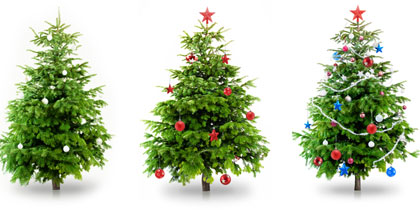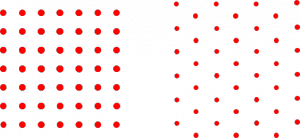
December 20, 2018, by Lindsay Brooke
O Tannenbaum! Is there a perfect way to decorate your Christmas tree?
By Ian Sheard, BSc (Hons), Physics – University of Nottingham 2014-2018. Media/Admin Assistant in the University of Nottingham Press Office.
Regardez-vous der Tannenbaums
Franco-German linguist I may not be, but I do know a thing or two about Christmas trees. In this regard, I flatter myself that I am completely normal. I have yet to have a protracted conversation with anyone who hasn’t given me the impression – implicitly or explicitly – that they know at least one or two things about Christmas trees.
However, another way in which I am “completely normal” is in my share of the universal ignorance of one single aspect of the mighty Norwegian spruce – its decoration.
A couple of weeks ago it was my job in the Press Office at the University of Nottingham, to erect the office Christmas tree. Our tree is, as was remarked to me by a colleague in the adjacent Marketing Office, “one of those narrow ones that are fashionable these days.” Indeed, the tree in our office stands at about 6 foot in height, but is scarcely more than half a metre in diameter at its base.
Where do you put the baubles?!
When it came to decorating the tree, the usual arguments began; which way round to wrap the tinsel? Star, angel, or fairy on top? How many fairy lights is too many fairy lights? But far and away the most contentious issue revolved around bauble placement. Discussions raged long and hard, but when the dust and fake snow had settled, all eyes turned to me – the one person in the office with a physics degree – to settle the matter once and for all, with nothing but my strange magic — maths.
I boiled the issue down to one key question: Is there a perfect way to arrange baubles on a Christmas tree so that they’re all evenly spread out? Well, I’ve been working on it for a while now, putting in long hours and staying up late into the night, postulating, hypothesising, testing, revising, modelling and remonstrating. And after all that I finally came back with an answer: No, no there isn’t. As it transpired, no one was satisfied with that answer, so they’ve got me to write this blog to explain myself.
Really, the problem is that Christmas trees are a stupid shape. If you have a two dimensional surface, like a sheet of paper or a computer screen, then it’s easy to create a set of points that are evenly spaced from one another — arranged either in a square pattern, or triangles tessellating into hexagons.
Christmas trees, unfortunately, are very unlike sheets of paper in all regards other than the fact that, if you were absolutely determined, you could turn a Christmas tree into a sheet of paper — although that would still leave you with – perhaps an even more pronounced – problem of what you’re going to do with your baubles. Norwegian firs are much more comparable in shape to cones, which have a curved – three dimensional – surface.
You wouldn’t necessarily assume that a curved surface could throw the maths so drastically out of whack, but it does. The full mathematical explanation is a bit beyond my level but essentially, because the circumference of a cone gets smaller the closer you get to its point, any square or triangular distribution of baubles would get squashed together towards the top, so they wouldn’t be evenly spaced from one another across the tree.
There is actually, despite my somewhat bleak outlook, one way of ensuring that all the baubles on a normal Christmas tree are evenly distributed from one another, but that requires you to only use one bauble on the entire tree. Which, although that satisfies my inner theoretical physicist, I’ve been informed by my colleagues it won’t satisfy anyone else.
It is an inconvenient truth that the decoration of a Christmas tree becomes significantly more complicated when one considers that inhabit a three dimensional universe, containing more than one bauble — to paraphrase Professors Brian Cox and Jeff Forshaw.
So, what’s to be done? If no perfect arrangement of baubles exists, do we just throw our arms in the air, tear down the tree and cancel Christmas? Or do we let anarchy reign and not take a mathematical approach to festive decorations at all?
My advice; just try not to think about it.
No comments yet, fill out a comment to be the first



Leave a Reply